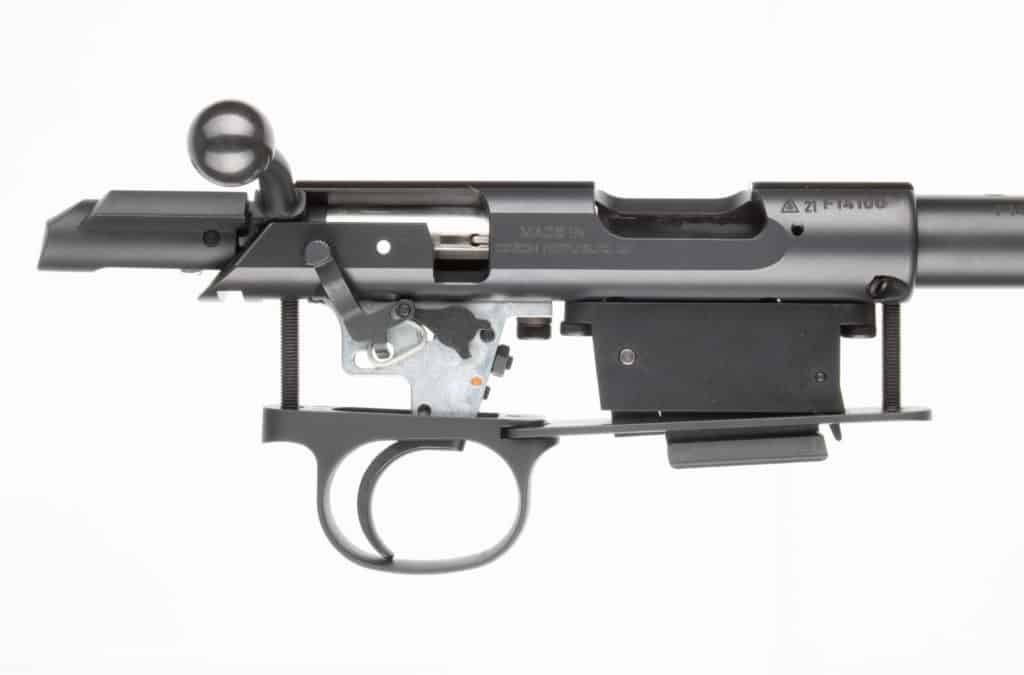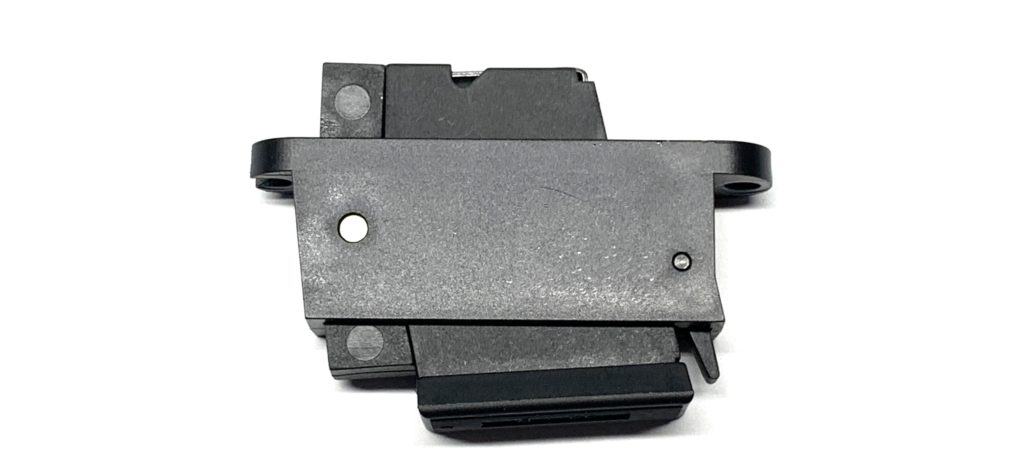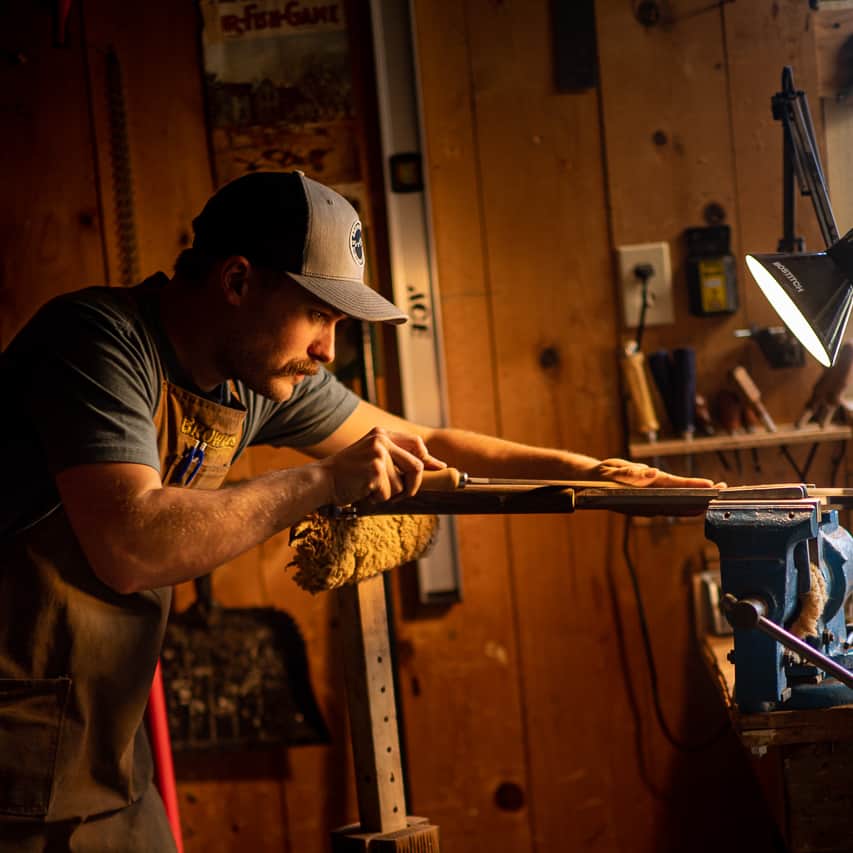
The CZ-457 has impressed countless shooters, myself included, with its capabilities and accuracy. When I bought my CZ-457, I wasn’t expecting it to be nearly as accurate as it was. I just fell in love with the platform and all it had to offer.
CZ is known for producing high-quality rimfires and continues to impress with the CZ-457. It is a great mid-priced full-size rimfire rifle that can be modified at the user level, making it very popular.
There are countless models on the market, including a desirable left-handed version. Covering all the different models would be a task in itself, so let’s take a deep look at the CZ-457 action and what makes it unique.
Affiliate Disclosure: This article may contain affiliate links. When you use these links, I earn a small commission from each sale generated at no cost to you. This commission helps me continue to put out free content. I work a full-time job that I am very happy with; therefore, I don’t need this commission and am not obligated to speak highly of any product. Everything written is my own opinion: the good, the bad, and the ugly.

The CZ-457 Action
The CZ-457 is a bolt-action rimfire rifle introduced by CZ in 2019. It is chambered in three calibers; .22 Long Rifle, 22 Winchester Magnum, and .17 Hornady Magnum Rimfire. It was built as an improved version of the beloved CZ 455 rifle and had many of its favorite features and some significant improvements to its appearance and functionality. It is of cock-on open, controlled feed design and is fed from a detachable box magazine. It comes standard with an adjustable trigger that I have found to work well.
During firing, the bolt locks at the rear, on the base of the bolt handle. The dual extractors keep control of the cartridge during the operation of the bolt, ensuring the bullet is not dragging and deforming as it enters the chamber. A true test of this design showed that the action functioned dummy rounds flawlessly without the barrel in place. The bolt throw is a quick 60 degrees, giving you ample clearance for any scope size and height, a significant upgrade over the CZ-455 with its 90-degree bolt throw.

This action is built with minimal plastic parts, most of which can be upgraded to aluminum or steel on the aftermarket. The barrels and magazines are completely interchangeable between the 455 and 457 making it easy to find aftermarket parts. The CZ 457 is rugged and reliable, making it the perfect platform for a custom competition or squirrel rifle.

The Receiver
The receiver is a one-piece steel design with an 11mm dovetail milled into its top, allowing for solid scope mounting. This tubular receiver has attractive lightning cuts and is approximately an inch shorter than the CZ 455. The receiver has no threads for the barrel extension as the barrel is a slip fit that uses two set screws to secure. The set screws are metric M6x1.0 thread pitch.
Use coupon code KTG10 to get 10% off your order of $150 or more at Brownells.
The overall appearance of the receiver is good, having clean lines and an attractive corrosion-resistant finish. The receiver is key to the modular system that allows quick barrel replacement and caliber changes. The receiver is the same across all the different 457 models and calibers.
The receiver houses the bolt catch, catch spring, and pin. This bolt catch serves as a bolt stop and a way to remove the bolt for cleaning. The bolt catch pin inserts in a blind hole and must be pulled out with pliers to disassemble. You do not need to drive the pin in on reassembly. The recoil lug is positioned at the rear of the receiver, right behind the rear action screw. It uses a steel insert in the stock, similar to many Tikka rifles.

The CZ-457 Bolt & Its Components
The bolt has 12 parts that are easily assembled and disassembled for maintenance. All of these parts, excluding the cocking indicator, are steel. The main bolt body has a recessed bolt face fully supporting the cartridge rim. This bolt body is the same across all three calibers and does not need to be swapped when changing calibers. It is a non-rotating design and houses both extractors.

The firing pin is improved over the 455 being 38% lighter, reducing the shock and vibrations during firing and improving the lock time. It strikes the cartridge rim at the 12 o’clock position and is square-shaped. This shape is not ideal for rimfire and tends to be something people frequently modify to improve ignition and accuracy. CZ advertises this firing pin design to be resistant to dry fire training.
The bolt handle is a critical piece of the bolt. It provides the lockup during firing and has the cocking cam that cocks the striker upon opening the bolt. The cocking cam also acts as a safety. If the firing pin falls without the bolt handle fully down in the locked position, the firing pin can not reach the cartridge rim. It ensures that the bolt has to be fully locked into position before the cartridge can detonate.
The end of the bolt handle is threaded and accepts both the factory bolt handle ball and many aftermarket handles. This is a very nice feature for those building a competition-style rifle. The thread size for the bolt handle is M6x1.0. Some aftermarket bolt handles are available here.

The dual opposing non-rotating extractors do a great job during the extraction operation and maintain positive pressure throughout the entire process. They are critical to the controlled feed design found on this rifle. They keep the cartridge pressed against the bolt face during loading, keeping it from deforming the bullet on the feed ramp. If disassembling the extractors, ensure they are back in the correct position during reassembly. The extractor with the sharper hook goes on the ejection port side, the right side for right-handed models. These extractors are retained by a wrap-around extractor spring.
The bolt lock or shroud is a one-piece design that keeps the bolt aligned during operation. It is made of steel and holds the cocking indicator, cocking indicator spring, and striker spring. It is held in place by the bolt lock pin. The cocking indicator is the one plastic piece on the bolt assembly. It is fluorescent red and protrudes from the rear of the bolt lock when the striker is cocked. When fired, the cocking indicator is no longer visible.

I will include the bolt guide as part of the bolt system. The bolt guide is a stationary part and does not move during the operation of the bolt. The front edge is beveled to serve as a feed ramp if necessary; however, I’ve found that my 22 LR never touches this. The rear of the bolt guide has a small raised portion that serves as the ejector on the longer magnum calibers. The rear magazine well screw secures the bolt guide to the receiver.
How Bolt Shims Increased the Accuracy of My CZ-457

The CZ-457 Factory Trigger
The CZ-457 factory trigger is leaps and bounds above most factory rimfire triggers. It is fully adjustable for the weight of pull and over-travel. CZ claims it is adjustable from 1.8 – 3.4 lbs, and I can confirm that claim as I have mine set at a crisp 2.2 lbs.
How to Adjust your CZ 457 Trigger
The trigger is a sear override type, and the safety blocks the movement of the sear. The safety is very positive and feels solid when engaging and disengaging. As mentioned briefly before, the CZ-457 is on safe when the safety lever is in the rearmost position and on fire when moved to the forward position. A white and red dot on the receiver makes it unmistakable as to which position it is in. In my opinion, the best feature involving the safety mechanism is that it can remain engaged while opening and removing the bolt.
Timney makes an aftermarket replacement trigger if the factory one does not meet your needs. It can be found here.

The trigger guard is a two-piece interlocking design made of steel. Yes, steel. The trigger guard has always been the first thing manufacturers go to to save money. Usually, this means some sort of polymer. Not with CZ. They built this to last.

The Magazine System
The magazine system on the CZ-457 comprises a series of parts that work together to create a versatile system adaptable to each caliber. Within this “system” is a magazine, magazine housing, magazine housing insert, magazine catch, and magazine catch spring. Aside from the springs and pins, all of these parts are made of polymer. The magazine housing, catch, and catch spring are the same for all calibers available. For the 22 Mag and 17 HMR, you remove the housing insert and use the appropriate magazine. The magazine housing is secured to the receiver with two screws.
As mentioned previously, the magazine housing insert is only necessary when using 22 LR-length magazines. The housing insert acts as a spacer to take up all of the excess space in the magazine well. It also acts as an extension to the ejector that is found on the bolt guide for 22 WMR and 17 HMR models. The housing insert is held in place in the magazine housing by a loose-fitting pin that is easily removed when swapping calibers.

The CZ 457 comes with a polymer 5-rd magazine. That magazine currently has a great reputation for reliability. It comprises 6 parts; magazine body, spring, follower, base plate, plunger, and plunger spring. The sole job of the plunger and plunger spring is to hold the base plate in place. The 17 HMR and 22 WMR magazines are interchangeable. Additional 5-rd, 10-rd, and 25-rd mags are available from CZ.
Final Thoughts on the CZ 457
The CZ-457 has quickly become my favorite rimfire platform. It is a highly capable platform that can achieve great levels of accuracy out of the box. It is very customizable and can be tailored to rimfire competition or as a tack-driving small game rifle. You really are getting the most bang for your buck with this rifle. If you are interested in reading more about my journey of achieving the most accuracy from my CZ-457, click here.
Read more about my Pursuit for Rimfire Accuracy with the CZ 457!
The action can be tuned beyond the factory standards to get the best imaginable performance. While I would like to go over some of these things, Michael Shea covers them better than I can in his book Rimfire Revolution. This book is well worth the cost and will get you tightening up your rimfire’s groups.

Written by: Kurt Martonik
Kurt is a Gunsmith, Reloader, Hunter, and Outdoorsman. He grew up in Elk County, Pennsylvania, where he became obsessed with the world of firearms. Following high school, Kurt enlisted in the United States Air Force as a Boom Operator, where he eventually rose to the position of Instructor. After his military service, he attended the Colorado School of Trades(CST) in Lakewood, CO for gunsmithing. Following graduation, he accepted a job at C. Sharps Arms in Montana, where he worked as a full time stockmaker and gunsmith.